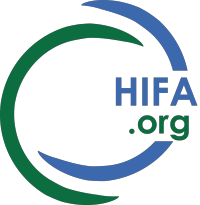Knowledge gaps remain among primary caregivers, defined here as 'the woman in the household over the age of 18 years, who was generally in charge of family care and household maintenance'.
CITATION: Knowledge, attitudes and practices assessment of malaria interventions in rural Zambia
Desmond T. Jumbam, Jennifer C. Stevenson, Japhet Matoba, John P. Grieco, Lacey N. Ahern, Busiku Hamainza, Chadwick H. Sikaala, Pascalina Chanda-Kapata, Esther I. Cardol, Passwell Munachoonga & Nicole L. Achee
BMC Public Health volume 20, Article number: 216 (2020) Cite this article
ABSTRACT
Background: Despite rapid upscale of insecticide-treated nets (ITNs) and indoor residual spraying (IRS), malaria remains a major source of morbidity and mortality in Zambia. Uptake and utilization of these and novel interventions are often affected by knowledge, attitudes and practices (KAP) amongst persons living in malaria-endemic areas. The aims of this study were to assess malaria KAP of primary caregivers and explore trends in relation to ITN use, IRS acceptance and mosquito density in two endemic communities in Luangwa and Nyimba districts, Zambia.
Methods: A cohort of 75 primary caregivers were assessed using a cross-sectional, forced-choice malaria KAP survey on ITN use, IRS acceptance and initial perception of a novel spatial repellent (SR) product under investigation. Entomological sampling was performed in participant homes using CDC Miniature Light Traps to relate indoor mosquito density with participant responses.
Results: Ninety-nine percent of participants cited bites of infected mosquitoes as the route of malaria transmission although other routes were also reported including drinking dirty water (64%) and eating contaminated food (63%). All caregivers agreed that malaria was a life-threatening disease with the majority of caregivers having received malaria information from health centers (86%) and community health workers (51%). Cumulatively, self-reported mosquito net use was 67%. Respondents reportedly liked the SR prototype product but improvements on color, shape and size were suggested. Overall, 398 mosquitoes were captured from light-trap collections, including 49 anophelines and 349 culicines. Insecticide treated nets use was higher in households from which at least one mosquito was captured.
Conclusions: The current study identified misconceptions in malaria transmission among primary caregivers indicating remaining knowledge gaps in educational campaigns. Participant responses also indicated a misalignment between a low perception of IRS efficacy and high stated acceptance of IRS, which should be further examined to better understand uptake and sustainability of other vector control strategies. While ITNs were found to be used in study households, misperceptions between presence of mosquitoes and bite protection practices did exist. This study highlights the importance of knowledge attitudes and practice surveys, with integration of entomological sampling, to better guide malaria vector control product development, strategy acceptance and compliance within endemic communities.
--
Best wishes,
Working together for health in Zambia - Join HIFA-Zambia: http://www.hifa.org/forums/hifa-zambia
HIFA-Zambia profile: Neil Pakenham-Walsh is the coordinator of HIFA-Zambia and the HIFA campaign (Healthcare Information For All - www.hifa.org ). Twitter: @hifa_org FB: facebook.com/HIFAdotORG neil@hifa.org

